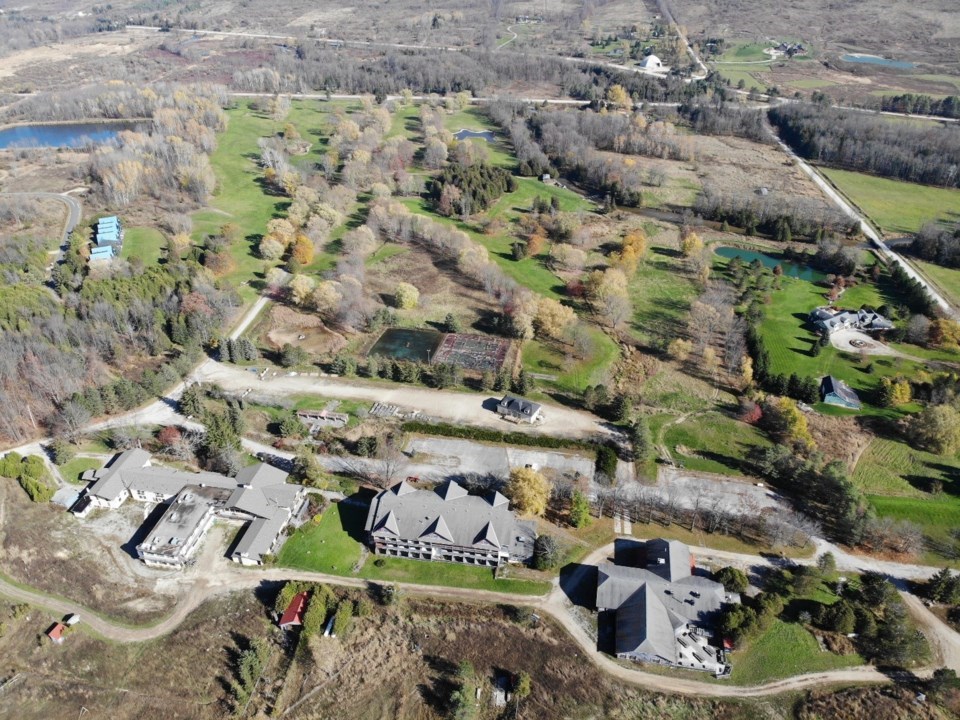A newly formed environmental organization has set its sights on encouraging sustainable development and protecting large tracts of land across the South Georgian Bay portion of the Niagara Escarpment.
Formed in late 2021, the Escarpment Corridor Alliance envisions a protected network of lands across the region, with the goal of sustaining biodiversity and ensuring enjoyment of the outdoors for future generations.
Alliance president Bruce Harbinson said he hopes to expand upon the work being carried out by the region’s existing environmental organizations.
“There are so many organizations that are doing incredible work, and all of it has its own unique focus” he said. “Our focus is the Southern Georgian Bay part of the escarpment running from Devil’s Glen to Georgian Peaks, and across from Castle Glen to the Beaver Valley.
“We believe that the development pressure in this area is so intense right now, that there needed to be an organization that was almost pan-escarpment across all of this area.”
A couple of the organization’s bigger focuses include opposition to the development of the recently sold Talisman Lands in Grey Highlands, as well as a proposed development at Castle Glen in The Town of The Blue Mountains (TBM), both of which sit along the Niagara Escarpment.
Development plans for the 620-hectare Castle Glen site have been contemplated since the 1970s, although none have come to fruition as of yet.
Proposed development plans were put on hold during the formation of the Niagara Escarpment Commission in the 1980s.
A plan agreed upon in the early 2000s would allow up to 1,600 residential units, 300 hotel units, and a maximum of 5,000 square metres for use as a golf course.
“The Castle Glen properties have had various proposals contemplated over the years spanning several decades,” said TBM director of planning and development services Nathan Westendorp. “Following a detailed process involving multiple stakeholders, agencies and public authorities, a detailed secondary plan was agreed upon in the early 2000s to guide future development within the Castle Glen Secondary Plan area.”
Westendorp said that the town does not currently have any proposals in review for the development, and that any proposal will be subject to review by both the town and Grey County.
“Grey County and the Town of The Blue Mountains need to be satisfied that all the policies and requirements have been met prior to the detailed subdivision plans being approved for construction,” he said.
The Castle Glen property boasts headwaters of local tributaries, fish habitats, provincially significant wetlands, and steep escarpment slopes.
Harbinson argued development on the property would be environmentally irresponsible.
“The property is just filled with all sorts of ecologically sensitive things that we just don't think that it's appropriate,” he said.
"We have a lot of steep slopes, [and] species of concern all over the place,” he said. “There are butternut trees all over the property, … Jefferson salamanders, one of the most endangered salamanders … there are significant provincially significant wetlands, there are all sorts of … springs around here.”
"[Castle Glen forms] part of the Niagara Escarpment lands," he said. "They are zoned recreational, and, in our opinion, a recreational designation does not mean a mini-city in an old forest of 5,000-plus residents, plus a village at the core of it."
A scientific study carried out on the land today might deem the development inappropriate, Harbinson argued.
“We know so much more today, and if somebody was to come in and study this entire property and say it’s highly suitable for development, we would have to listen to that. But I know ... that is not what any scientific study would show,” he said.
Harbinson also said that the karst topography featured on the property presents significant pollution risks.
“One of the things that really concerns us is the fact that the majority of this development would be built right on this karst topography, and what that means is that there's really no filtration that happens,” he said. “Anything that enters into the lands basically goes straight down into the Amabel aquifer, which sits underneath Castle Glen.”
When you think of golf courses, when you think of roads with the amount of traffic and where all of that runoff goes, the risk of contamination … is very, very high,” he said.
Although opposed to the developments at Castle Glen and Talisman Lands, Harbinson said that Escarpment Corridor Alliance is not fundamentally opposed to development.
“We are not against development, we respect the need for development,” he said. “What we're against is what we believe is very short-sighted, inappropriate development, right in the heart of the Niagara Escarpment plan lands. That's what we're fighting for with Talisman, that's what we're going to be fighting for with Castle Glen.”
Escarpment Corridor Alliance also plans to engage private landowners to contribute to their conservation efforts by expanding the amount of protected land in the area.
“The Escarpment Biosphere Conservancy … protected over 190 properties, almost 20,000, acres over the last couple of decades,” he said. “We are partnered with them … to educate private landowners across the area [on] conservation options for their private properties."
“If we can convince private landowners beyond the immediate Niagara Escarpment lands to do something unique conservation-wise with their properties, so much the better,” he said. “We can add to that green space, and try and keep it protected, and try and increase and create the opportunity for sustainable tourism, recreation opportunities that we believe are the lifeblood and sort of the golden goose of this area.”



